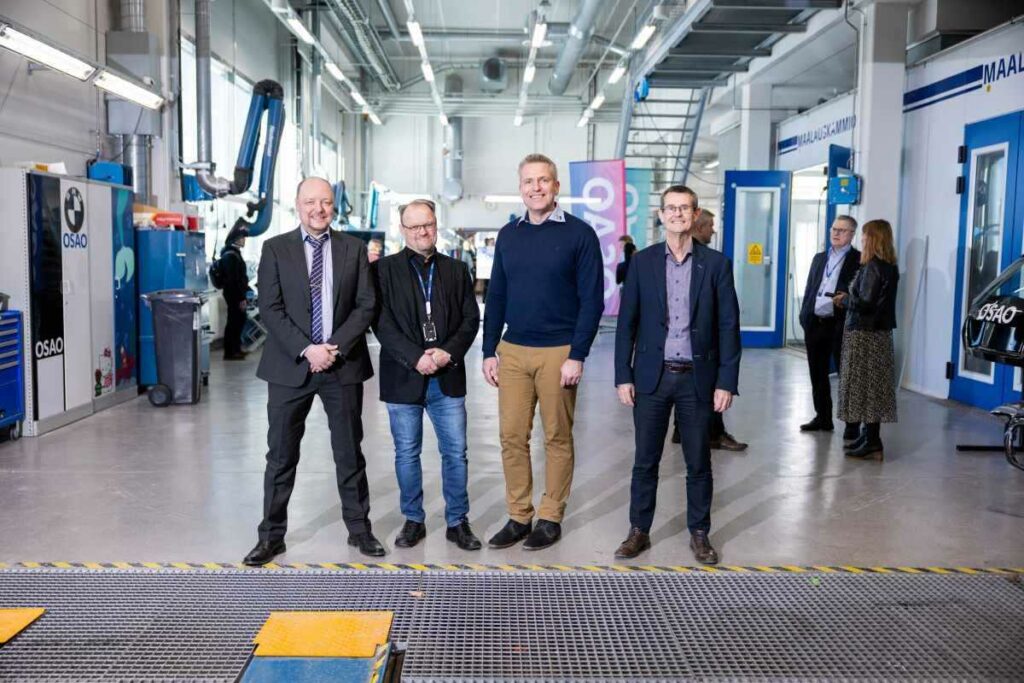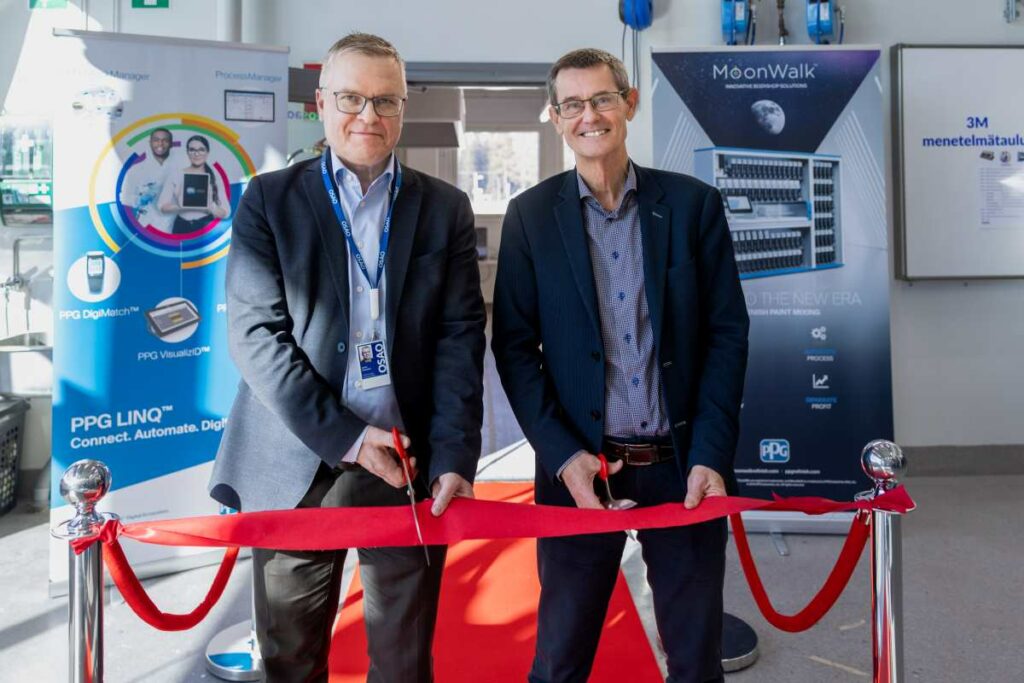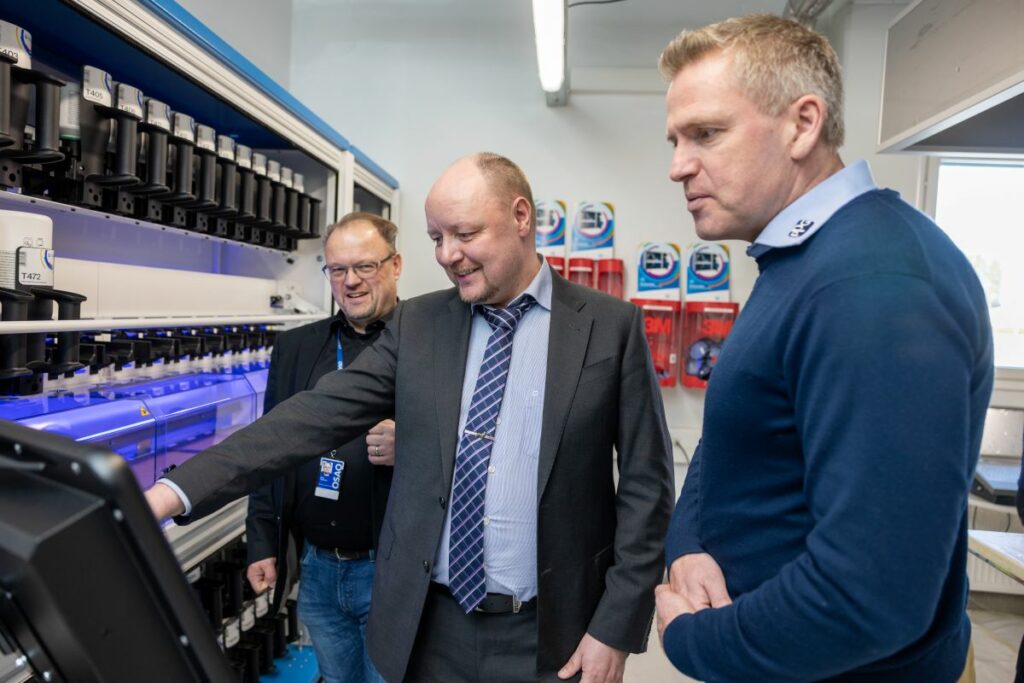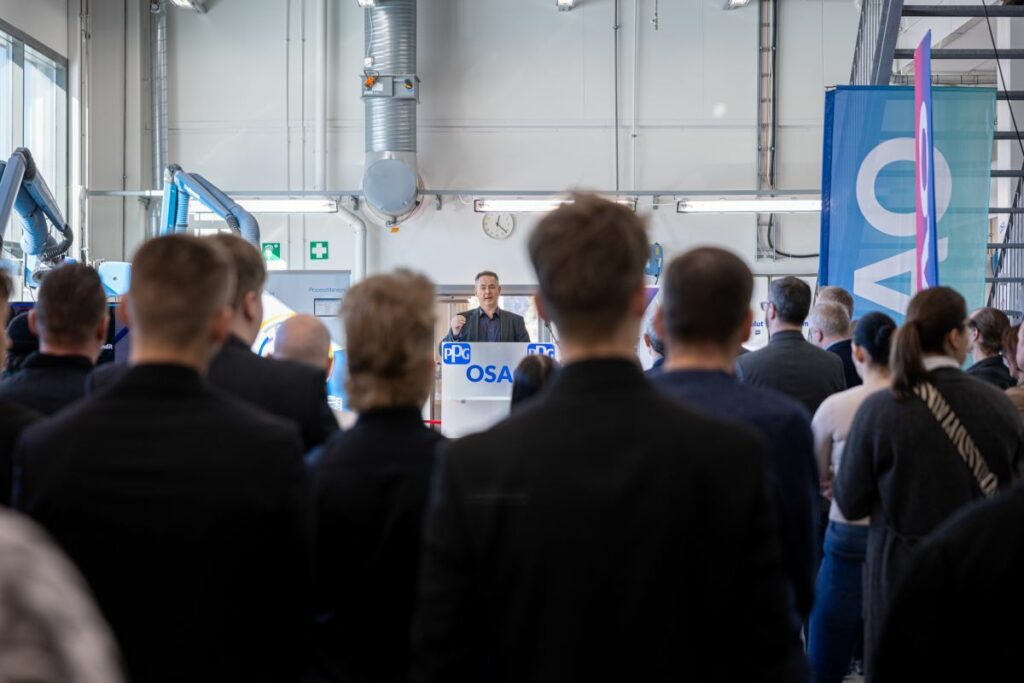
OSAO’s painters received state-of-equipment
Digitalization will take OSAO´s automotive refinishing education to a whole new level
Digitalization will boost OSAO’s automotive refinishing education. The paint-mixing system donated by PPG will bring the latest information and technology to students. “Cutting-edge equipment allows us to teach peak professionalism in automotive refinishing,” says Sauli Turpeinen, Head of the Automotive Department.
Educational consortium OSAO (VET) and coatings manufacturer PPG have collaborated since 2016, when PPG first won the competitive tender to become the paint supplier for OSAO´s automotive field. PPG´s Finnish importer, Cora Refinishins Oy, is their partner in saily collaboration.
The longstanding and comprehensive partnership reached new heights at an event on the technology and future of the automotive refinishing sector (Automaalauksen teknologiat ja tulevaisuus) with PPG’s donation of the smart and accurate MOONWALK® paint mixing system to OSAO’s Haukipudas unit, which will enable students to learn using the latest technology.
Worth around 60,000 euros, the donation also included cutting-edge digital tools and systems.
“The new MOONWALK® equipment will bring OSAO’s automotive refinishing education into the modern era and put it at the bleeding edge of development in the sector,” says Sauli Turpeinen, Head of the Automotive Department.
“In education, we can now reach the same level as industry actors,” he says.
PPG’s collaboration with OSAO is part of the company’s global commitment to education and workforce development. The company partners with educational institutions to promote skilled trades as a career option for young people and to ensure that students have access to modern technology and up-to-date training.
“By supporting vocational schools like OSAO with innovative and sustainable technologies, we are taking a crucial step in meeting the growing demand for skilled workers in the manufacturing and the painting industries,” says Henrik Friis, Nordisk Marketing Manager at PPG Refinish Scandinavia.
“Empowering the next generation of skilled professionals is one of PPG’s core aims,” he adds.

Digitalization boost efficiency in automotive refinishing
The automotive refinishing profession demands precision, keen eye and hand coordination, and an excellent eye for color, explains Harri Käpylä, an automotive refinishing lecturer. Requirements surrounding efficiency and productivity have also become more stringent, and MOONWALK® and digitalization are the solution.
“This isn’t just about mixing paint; it’s about making the entire process of automotive refinishing more efficient. We can design the correct color shade next to the vehicle and then take it straight to the machine. This makes work more flexible, and now we can show students automotive refinishing at its smoothest,” Harri adds.
“AI has made its way into the industry, but craftsmanship will remain essential for a long time. Artificial intelligence and robots could be suitable for applications like warranty repairs involving thousands of identical vehicles. However, AI would require extensive training for each car model and each type of repair, making it extremely challenging to use for general repairs,” says Henrik.
At the Haukipudas unit, the equipment donated to OSAO at the Automaalauksen teknologiat ja tulevaisuus event calculates the required
amount of paint to a high degree of precision. Students no longer have to guess whether to make 200 or 600 grams of paint – or something in between.
“Color precision will also improve. A person is able to mix paint to a tenth of a gram, whereas the new machine operates to a precision of one hundredth of a gram,” says Sauli.
According to Henrik, the development of color shades is driven by car manufacturers and their preferences, which manufacturers like PPG aim to accommodate with their products.
“Current trends include increasingly sophisticated color shades, three-layer coatings, and eye-catching translucent colors,” he says.
Digitalization and technological development in the sector can also be examined from sustainable development and environmental perspectives. The correct quantities of paint and precise colors help to achieve the desired result immediately, which means less material consumption, less waste, and increased energy savings.
“The number of mistakes will decrease. Of course, in education, we practice things and do things over and over. For that, we have an automotive painting simulator obtained in a previous project which teaches the basics in a fully virtual environment – with VR glasses and a spray gun in your hand,” say Sauli and Harri.
“Practicing with the simulator is good in that it reduces the stress for students when they later go into the paint chamber with a real spray gun.”

Green repairs are a competitive advatage
When it comes to future prospects in the industry, Henrik emphasizes the needs of insurance and leasing companies. These companies primarily look for repair shop partners whose operations are sustainable.
“This involves minimizing energy consumption and CO2 emissions. Green repairs will become a key competitive factor,” he states.
Another crucial factor for insurance and leasing companies is rapid repair turnaround, reducing costs associated with temporary replacement vehicles.
“For us, it’s essential to help repair shops achieve quicker repairs and repairs that are done correctly the first time. PPG’s paints, technology, and digital systems enable efficient repair processes, providing real-time visibility into each repair to avoid production bottlenecks,” he says.
A third significant trend Henrik mentions is the increasing popularity of electric vehicles, particularly in the Nordic countries. This reduces the demand for mechanical repairs, forcing repair shops and painters to seek new revenue streams, such as offering additional customer services and special small-scale repairs known as smart repairs.
OSAO’s automotive field has drive
PPG’s partnership with OSAO strengthens expertise in automotive refinishing by providing cutting-edge training expertise and digital tools. One of the key objectives is to attract new young painters to the industry and prepare them for the challenges of a rapidly evolving sector. Digitalization will play a crucial role in this transformation.
In the joint application period which ended in March, applicants found OSAO’s automotive field attractive: 100 students will be accepted into the automotive field at Haukipudas, and there were more primary applicants than there were places.
OSAO’s painters saw success at the Finnish national skills competition at the Taitaja event. In last year’s international skills competition, an OSAO student achieved an excellent rank within the top ten. After all, OSAO has also been recognized as a progressive provider of education in the automotive sector, developing educational activities with consideration for learning, changes in operating environments, and technological development.
Automotive painters who graduate from OSAO find employment in the relevant industry relatively easily.
“There are a limited number of jobs in Oulu, but the employment situation throughout northern Finland and Central Ostrobothnia is good, and there is even a shortage of skilled painters in some places,” says Harri.
In Finland, only around ten educational institutions are permitted to provide automotive refinishing education. The closest municipalities to OSAO offering the education are Rovaniemi and Kuopio.
“Automotive refinishing education and education in the automotive sector more widely provide all kinds of skills for working life. For example, many industrial sectors employ painters all over Finland, and there’s also demand in Sweden. In the Oulu region, several major investments in the automotive refinishing sector are coming up,” adds Sauli.
